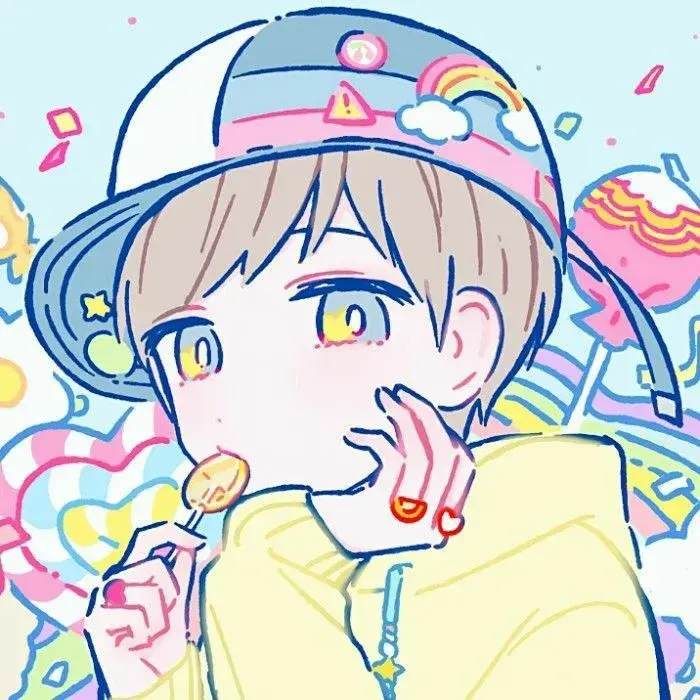

Sometimes I just need some Osaka silliness in my life. No stakes, low energy, just absurdity and vibes.


Sometimes I just need some Osaka silliness in my life. No stakes, low energy, just absurdity and vibes.
Howdy y’all! Miss Kiyan here! Ain’t from 'round these parts?
My nightmare…


I have read the beginning portion of this manga and really liked it. I am looking forward to this one.
His left arm is against the shelves behind her, while her right arm is the one covering his mouth. Yeah, it is a bit of a trick of the eyes though. You made me go back and look again and my brain did think for a sec that his left arm was somehow twisted around to cover his own mouth.


Yeah, I am confused as well, I feel like there was a lot that was left on the cutting room floor. Either that or the author really wanted to skip past all the prelims to get to a more manageable cast of characters. But, it begs the question, if all the important characters that we know make it to the Archimedes and then make it through this first round, then what was the point of them? It just makes the past couple episodes feel like a waste.
Also, Anaak just figured out it was Bam by watching him. Could nobody else up to this point? I feel like Viole’s identity is the worst-kept secret ever at this point.


Dan Da Dan has been phenomenal so far. That and Orb have been the two shows this season that have really stood out as a clear step above everything else for me. As for waiting for something to finish before diving in, I absolutely do that sometimes. Most recently I did that with the Spice and Wolf remake and The Apothecary Diaries. If I had to pick one that I would be interested in bingeing this season after it wraps up, it would likely be Blue Box.


Yeah, Netflix has been stepping up their anime game. They have gotten on board (mostly) with the weekly release schedule and even agreed to co-license a series like Dragonball Daima so that it also releases on Crunchyroll. I was worried that Crunchyroll was becoming a bit of a monopoly after the Funimation merger, but honestly Netlix is probably putting up a better fight than HiDive right now.
Thanks for the info! I am just going to have to test some things and see how it goes. My wordpress site has quite a number of image galleries, so I’ll probably have to do some experimenting to see how those work.


Pham feels like a cheat code. There are times that Pham just feels like a plot device more than an actual character. Find every piece of furniture and random item that had an explosive spell place on it and move it somewhere outside the castle without anybody noticing? Sure, no problem.
I had kind of forgotten how this father/daughter pair played out in the story, so it was a nice moment to see her come to understand that her father was being courageous when it mattered the most. That picking and choosing your battles was a better strategy for the outcome of protecting those he cared about. @[email protected]



Yeah, unfortunately it is also only really convenient if you are on the ani.social instance. My most wished-for feature in lemmy is some way to link to posts/comments in an instance-agnostic way. Alas…


Hey man, I get it. I especially liked her uniform. The military uniforms in this show were stylish.

Trying to think of what my first anime crush was, I think it was probably Sailor Mercury. This probably has set me up for a lifetime of rooting for blue-haired heroines that will ultimately lose.



That’s true! I hadn’t thought about how silly that was until you pointed it out. Relena has a posse like she is some kind of Villainess.


Yes! I have a bit of a confession to make. I added the functionality to rikka to create the pinned post where she lists all the recent episode discussion threads because I am often a couple days late watching an episode, and I was having trouble finding old threads. So, I made it purely to help me go back into threads from a couple days ago to make a comment. I figured, if I was having trouble with it, other people probably were too.


Lol, Wu Fei is certainly one of the least likeable of the main set of pilots. I remember liking Duo a lot though, and Trowa wasn’t bad despite his swept bangs look.


Weekly ranking roundup:
Credit to /u/Abysswatcherbel for making the chart for reddit karma and /u/Nooble5 for the Anime Trending chart.


It’s been a whole year of posting in this community! It’s hard to believe it’s been that long. It feels like just yesterday that I created this account after the drama surrounding the defederation from the ml instance.
Something that I mentioned briefly in the post up above, but wanted to call out once more, is that hitagi might not be nearly as visible as I am in this community, but they actually do a lot behind the scenes to keep things running. In addition to everything involved with the infrastructure of running the instance, I was just looking through the reports I have received, and roughly half of them were resolved by hitagi prior to my ever seeing them. It also works out nicely that the two of us live on basically opposite sides of the globe, meaning that we have pretty good time zone coverage. So, even if they aren’t posting as much as I am (I mean, who is really?), hitagi has been a vital part of keeping things running smoothly here.
As a sort of unofficial celebration of the anniversary, I am happy to do a kind of mini-AMA in this thread if people have any questions for me that are on their mind (either anime-related or not).


I do like how we are slowly building out our cast of other characters. However, I feel like the plot has mostly stalled? Like, we haven’t seen any kind of mention of his terminal illness since episode 1. I was hoping that we would see more of him processing his impending death and the emotions that that would bring.


That new rod/reel cost ~850 USD. That is an insane amount to spend for a new angler that is deep in debt. I just looked up what an equivalent to my rod/reel costs today and came out to $120, and I have been using that for two decades at this point. I guess when you are doing saltwater fishing it would be more expensive, but that is still nuts. I guess when you know you only have two years left to live, might as well live it up?
Unrelated to isekai, but I saw from your site that you migrated from Wordpress to Hugo. What method did you use to do that? I have an old wordpress site that I keep running for somebody, but it isn’t actively updated anymore. If I could convert that to static html and host it using something like github pages, that would be awesome. I looked into it once before, but there were a bunch of different plugins and methods, so the inertia of not doing it won out.
That’s a good theory about Liz faking losing control of her mana. She definitely seemed more intentionally manipulative this episode compared to previous. I think you are right that she likely has knowledge of the game like Alicia does.